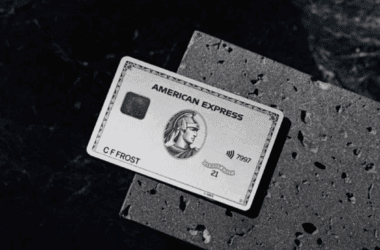For no-annual fee cards like Chase Freedom, the question of canceling doesn’t necessarily arise. The Chase Freedom card was my first Chase card and I’ve carried it in my wallet ever since. Over the the last few years, we’ve seen competition intensify as multiple banks have introduced mid-tier and premium credit cards. These cards carry an annual fee, anywhere between $95 to $595. If you hold on to one of these, you may often face this question each year. Should you keep, cancel or downgrade your credit card once the annual fee posts for the second year?
Credit Card Annual Fees
I’ve written previously about how banks often play tricks with annual fees and issuing credits in order to justify higher annual fees. Annual fees, in addition to transaction fees, serve as a major revenue driver for banks.
Bank Rules
Before you decide what you need to do next, please keep the sign-up bonus rules of each bank in mind. For example, if you have an American Express card, you may not benefit much from canceling and getting it again. That’s because Amex states that you cannot receive a sign-up bonus again for the same card.
Unlike Amex, Citi’s clock starts ticking even after you cancel a card. In such a case, it’s better to downgrade instead of canceling and having to wait for another 24 months.
Valuation of Benefits
Clearly, your decision to keep, cancel or downgrade is driven by your valuation of benefits or the points that you earn. Let’s take the example of a card that’s been very popular since its relaunch. It’s the Amex Gold Card. The card has a $250 annual fee.
Evaluating the real value of benefits
When you’re looking to evaluate the value of benefits, you try to assign a monetary value to each card benefit. In this case, the Amex Gold Card has an annual fee of $250. That’s offset by a $100 airline fee credit and the $120 dining credit. The dining credit is split over $10 chunks every month of the year.
Now you may say that these benefits cover $220 of your annual fee. However, in my opinion, the real value of the card lies in its potential to earn valuable Membership Rewards points.
Given that I put all my grocery and dining expenses on the Gold card, I’m able to earn thousands of points every month just by spending on these categories.
Changing Spend Patterns
I was unhappy when Amex made changes to the Gold card and increased the annual fee. Banks have lucrative partnerships with brands and want to steer you towards spending with them. In this case, ordering with Grubhub to get $10 off is pretty easy, even though I’m not a big fan of Grubhub.
Losing the gift card workaround on the airline credit has definitely changed things. I now have to ensure that I fly domestically at least once in order to utilize the airline fee credit. Previously, I could just buy gift cards in order to use them in the future.
When you should cancel or downgrade
Here are a few instances when it’s pretty clear that you should cancel or downgrade the card.
- Your travel patterns have changed and you no longer fly a given airline or stay at a certain hotel. For example, I canceled the Amex Platinum card when I was traveling internationally for a couple of years and had no use of the airline credits. I’ve never held any co-branded United card since 2014 because I’ve stopped flying United.
- You are going out of the way to justify the annual fee. In short, you’re changing your purchase behavior in order to recoup the annual fee. For example, I canceled the Amex Platinum when I found no use of their Uber credit. I drive my own car everyday and find Uber Eats to be overpriced most of the times. As a result, I don’t see the need to use an Uber credit every month.
- You have an option to downgrade to a lower annual fee or a no annual fee card. For example, I held the Chase Sapphire Reserve card for a couple of years. In the third year, I downgraded it to a Chase Freedom Unlimited card.
No one size fits all strategy
When it comes to renewing your card, there’s no one advice that fits your case. Every person’s travel habits are unique. I can provide you with a template to help you make the correct decisions. However, it’s up to you to decide where to spend your money. So by all means, make a decision to keep, cancel or downgrade based on your own unique situation.
The Pundit’s Mantra
If you decide to cancel, then please refer to my post about acing the retention call. Banks offer incentives to loyal customers to keep their business. By having the correct strategy in place, you can earn valuable retention bonuses in order to offset the annual fee when you renew your card.
I use a simple rule of thumb to decide whether I should renew the card. I ask myself if I’m altering my current purchase behavior in any way just to justify the annual fee that I’m paying. If the answer is yes, then I cancel or downgrade. If the answer is no, then I renew the card.
Which credit card have you held long term and paid the annual fee each year? Let us know in the comments section.
Never miss out on the best miles/points deals. Like us on Facebook, follow us on Instagram and Twitter to keep getting the latest content!













Sometimes you just want to simplify. I retired a little over a year ago and turn 65 in January. About 6 months ago I had 26 credit cards – now I am down to 18 and plan to cancel three more next month. My credit scores on Credit Karma have stayed the same +- 2 points (with some credit limit moving). One month my average card age actually jumped by 4 months.
Without business costs I have less spend to do on cards (no MS). I’ll still get new cards when I see a real good offer or do upgrades like the move a few months ago to Amex Hilton Aspire. Also I’ll be under 5/24 in December.
Seems like a prudent strategy!
Hi there,
Thanks for sharing this informative post. I can now decide well about the credit card downgrade.
Thanks! Glad you found the post informative.